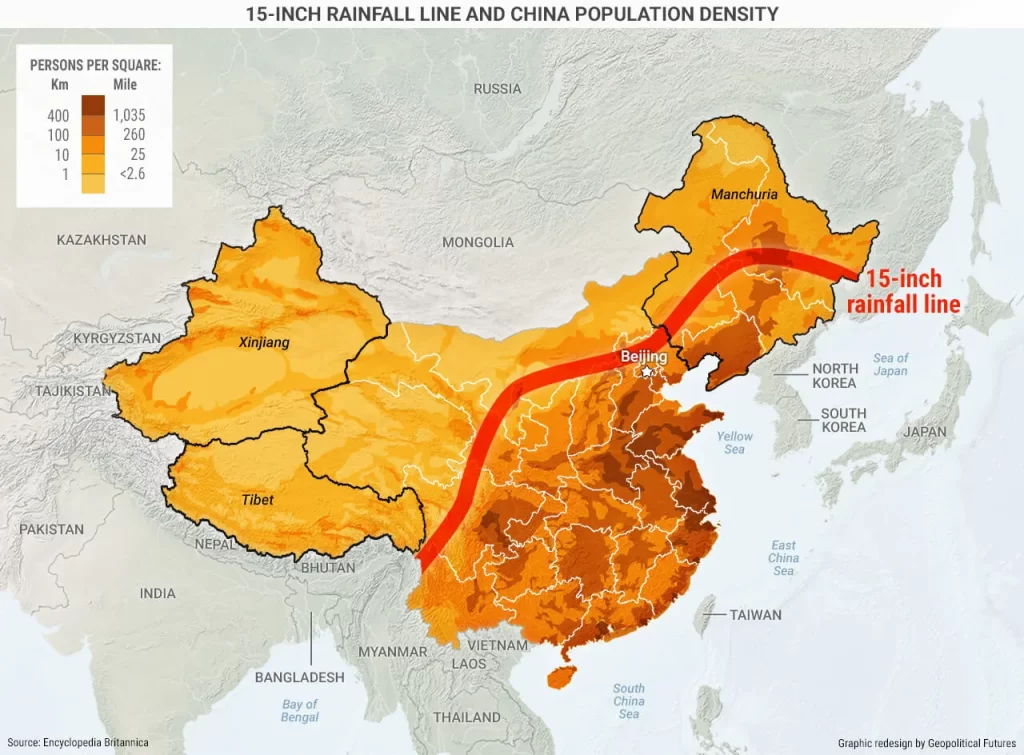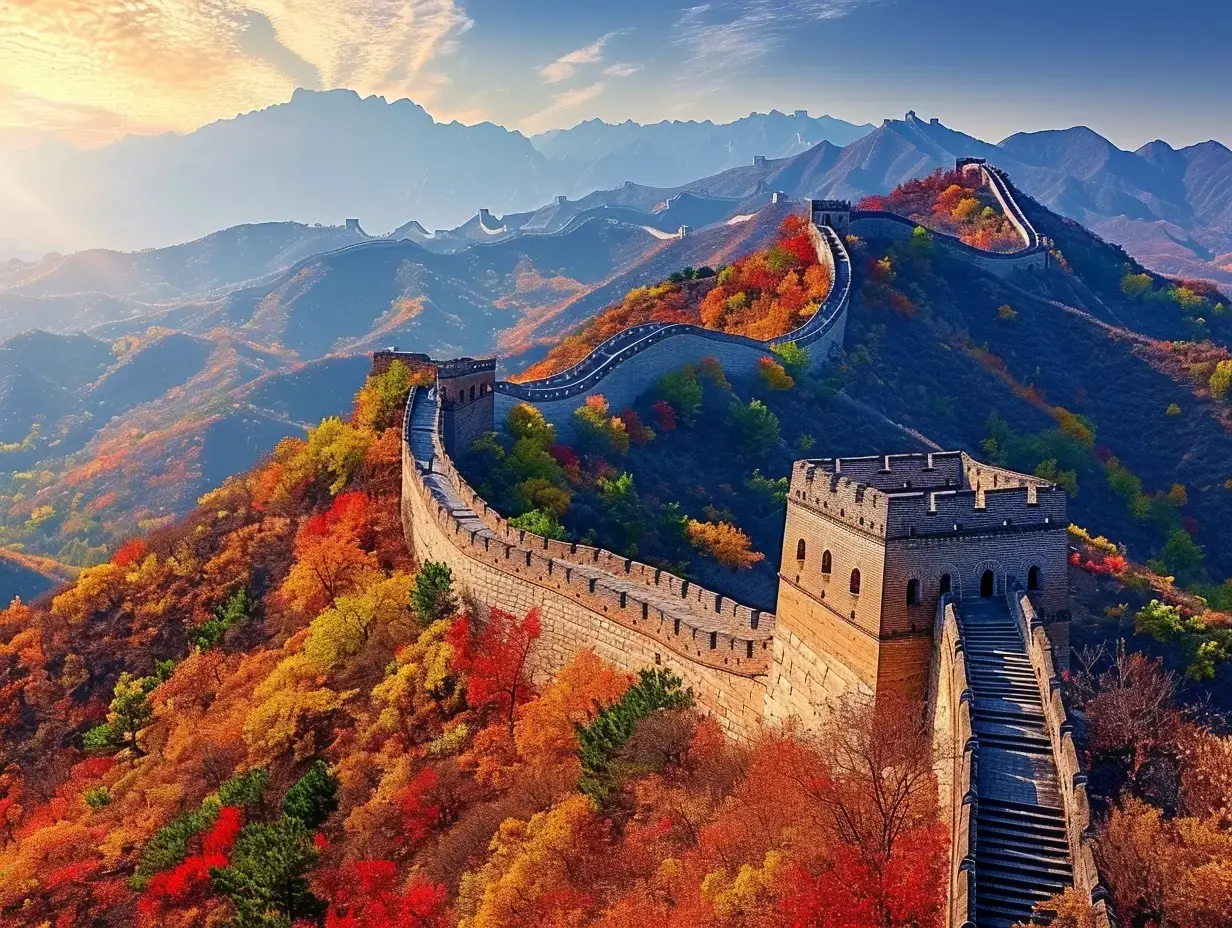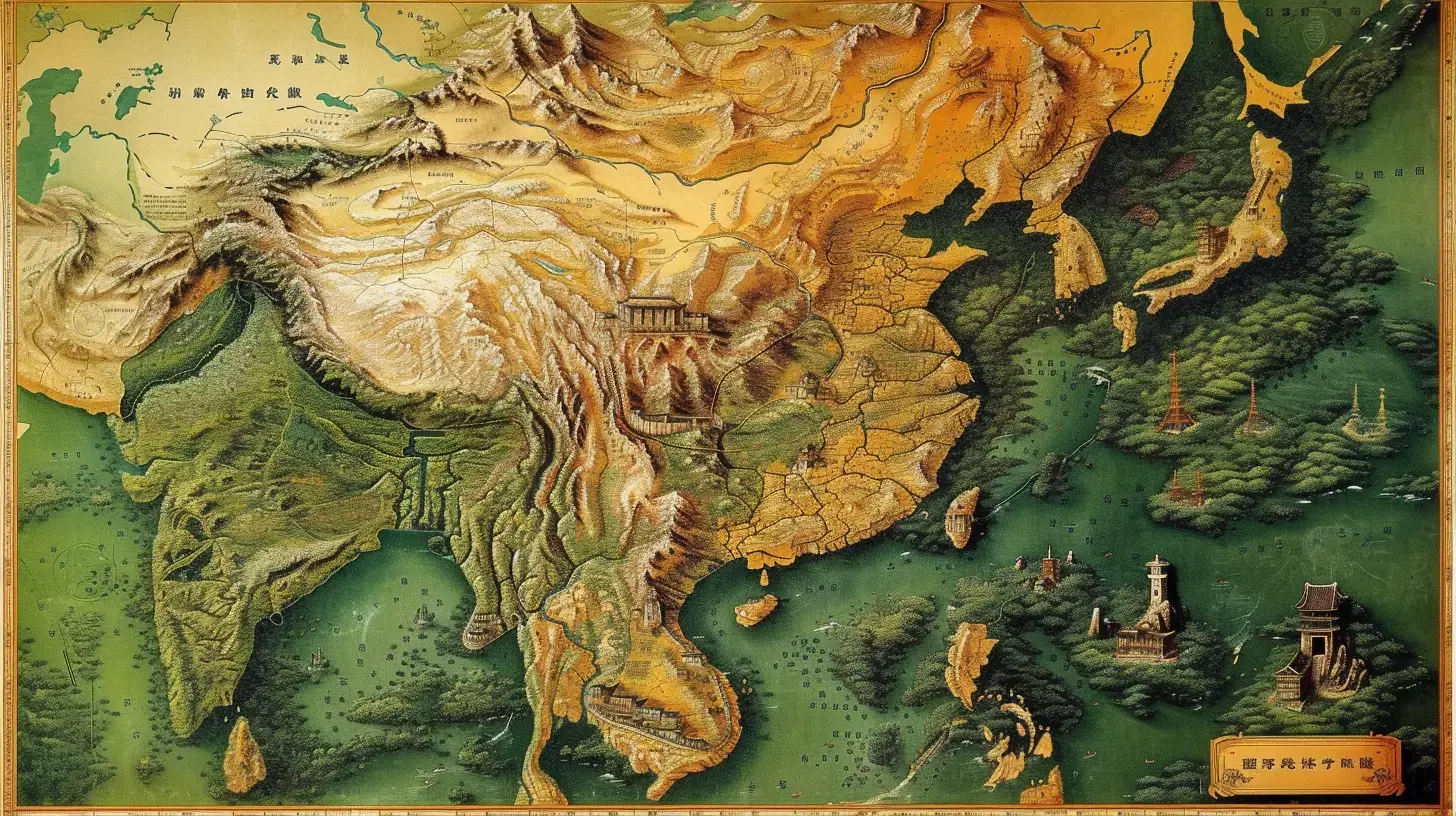In the intricate game of geopolitics, geography often shapes a nation’s destiny. And when it comes to China, its sprawling landscape with its mountains, rivers, and deserts has had a profound influence on its history and development. This article explores why China is considered a “prisoner of geography” and how its geographic features have shaped its current political, economic, and military landscape.

Understanding China’s geography
China, with its vast land area and diverse topography, has a geography that is as complex as it is fascinating. From the towering Himalayas in the southwest to the vast Gobi Desert in the north, China’s borders are defined by natural barriers that provide a sense of security but also limit access to resources and markets. These geographical features have played a crucial role in shaping China’s history, as well as its current political and economic landscape.
The country’s geography is characterized by a diverse range of ecosystems, including mountains, plains, plateaus, and deserts. The Yangtze River, the third-longest river in the world, cuts through the heart of the country, providing fertile land for agriculture and serving as a vital transportation route. The mountain ranges, such as the Himalayas and the Kunlun Mountains, act as natural barriers, protecting China from invasions but also isolating it from the rest of the world.
The impact of China’s geography on its history and development
China’s geography has had a profound impact on its history and development. The natural barriers provided by its mountain ranges and deserts have played a significant role in shaping its political and cultural identity. These geographical features have made it difficult for external powers to invade or conquer China, contributing to a sense of national pride and resilience.
The isolation caused by China’s geography also led to the development of a self-sufficient agrarian society, with a strong emphasis on agriculture and centralized rule. The fertile plains along the Yangtze River and the Yellow River allowed for the cultivation of crops, leading to the rise of ancient Chinese civilizations. The geography of China also influenced the development of the famous Silk Road, a network of trade routes that connected China with the rest of Asia and Europe.
China’s geographical challenges and opportunities
While China’s geography has provided certain advantages, it has also posed significant challenges. The vast size of the country means that different regions have different natural resources and climates. For instance, the northern regions of China are rich in coal and oil, while the southern regions are known for their fertile agricultural lands. This regional disparity has led to economic imbalances and disparities in development.
Moreover, China’s geography has also made it vulnerable to natural disasters. The country is prone to earthquakes, floods, and droughts, which can have devastating effects on its population and economy. The geographic location of China also exposes it to typhoons and tropical storms, particularly in the coastal regions, leading to frequent natural disasters.

The role of geography in shaping China’s foreign policy
China’s geography plays a crucial role in shaping its foreign policy. Its strategic vulnerability in the East and South China Seas, where disputes over territorial claims have increased tensions with neighboring countries, is a result of its geographical position. The control of these maritime territories is not only important for China’s national security but also for its access to vital trade routes and resources.
China’s geographic location also influences its relationships with other major powers. Its proximity to Russia, India, and Japan, as well as its shared borders with several countries, including North Korea and Afghanistan, has shaped its historical interactions and current geopolitical dynamics. China’s geography has made it both a regional power and a global player, with interests and challenges that extend beyond its borders.
China’s territorial disputes and their geographical significance
China’s territorial disputes, particularly in the East and South China Seas, have significant geographical implications. The contested islands and waters are not only valuable for their potential oil and gas reserves but also for their strategic importance in controlling maritime trade routes. China’s claims in these areas have raised concerns globally, as they challenge the existing international order and threaten the security of neighboring countries.
The geographic features of the East and South China Seas, such as the Spratly Islands and the Paracel Islands, provide China with a strategic advantage in asserting its territorial claims. The vastness of these waters and the complexity of the archipelagos make it challenging for other countries to challenge China’s control effectively. The geographical significance of these disputes is not only limited to the immediate region but also has broader implications for regional stability and global trade.
The geographical implications of China’s Belt and Road Initiative
China’s ambitious Belt and Road Initiative (BRI) is a prime example of how its geography has influenced its foreign policy and economic strategies. The BRI aims to connect China with Europe, Asia, and Africa through a network of infrastructure projects, including railways, ports, and pipelines. By doing so, China seeks to overcome its geographic limitations and expand its economic reach.
The BRI takes advantage of China’s geographic position as the gateway between East Asia and Europe. It leverages existing trade routes, such as the ancient Silk Road, and utilizes China’s financial and technological capabilities to create new transportation corridors. The BRI not only provides China with access to new markets and resources but also enhances its geopolitical influence by strengthening economic ties with other countries.
China’s geographical influence on regional and global affairs
China’s geography has a significant influence on regional and global affairs. Its rapid economic growth, fueled by its vast population and abundant resources, has made it a major player in the global economy. China’s geographic size and strategic location have allowed it to become an indispensable trade partner for many countries, as well as a source of investment and development.
Moreover, China’s geographical position has also shaped its role in regional security issues. Its proximity to North Korea, for example, makes it a key player in the ongoing nuclear crisis on the Korean Peninsula. China’s geography has also positioned it as a mediator in conflicts in Southeast Asia and the Middle East, as well as a participant in international efforts to combat climate change and promote sustainable development.
Comparisons with other countries and their geographical constraints
While China’s geography presents unique challenges and opportunities, it is not the only country that is influenced by its geographical constraints. Many other nations, such as Russia, India, and the United States, also face similar issues related to their geography. Understanding these comparisons can provide valuable insights into the dynamics of international relations and the role of geography in shaping a nation’s destiny.
For example, Russia’s vast land area and harsh climate have shaped its historical development and geopolitical aspirations. India’s diverse topography and its location in the Indian Ocean have influenced its relationships with neighboring countries, as well as its access to maritime trade routes. The United States, with its expansive territory and its position between the Atlantic and Pacific Oceans, has become a global superpower, using its geography to its advantage.

The ongoing relevance of geography in China’s future
In conclusion, China’s geography plays a crucial role in shaping its national interests, foreign policy, and aspirations on the global stage. Its vast land area, diverse topography, and strategic location have both advantages and challenges. China’s geography has influenced its history, development, and relationships with other countries.
As China continues to rise as a global power, its geography will remain a significant factor in determining its future. The ongoing territorial disputes, the ambitious Belt and Road Initiative, and its role in regional and global affairs all highlight the continued relevance of geography in understanding China’s trajectory. By understanding the intricacies of China’s geography, we gain valuable insights into the opportunities and constraints that shape its present and future.
If you found this article insightful and are intrigued by the complex interplay between geography and geopolitics, we invite you to extend your exploration by reading our detailed article on Russia’s geography. Discover how Russia’s expansive territories and unique landscapes have played a pivotal role in its own historical development and current geopolitical strategies.




